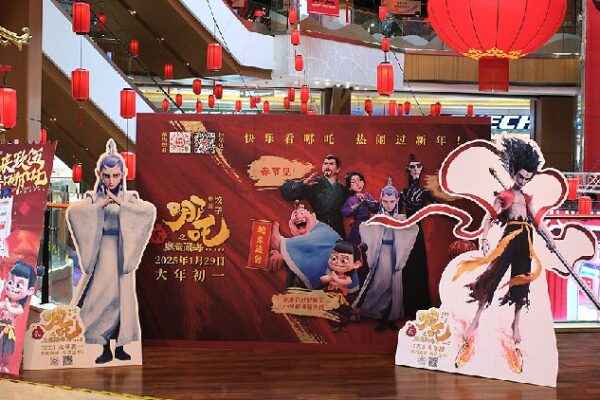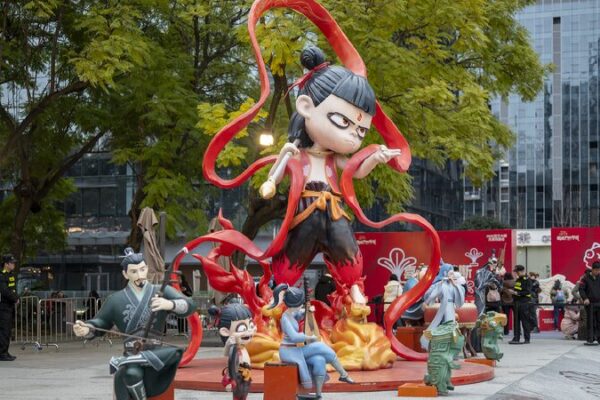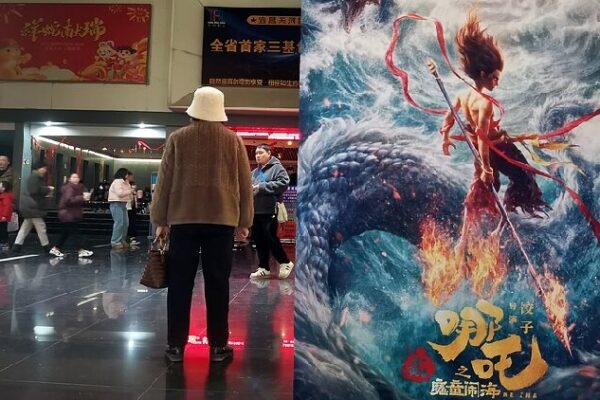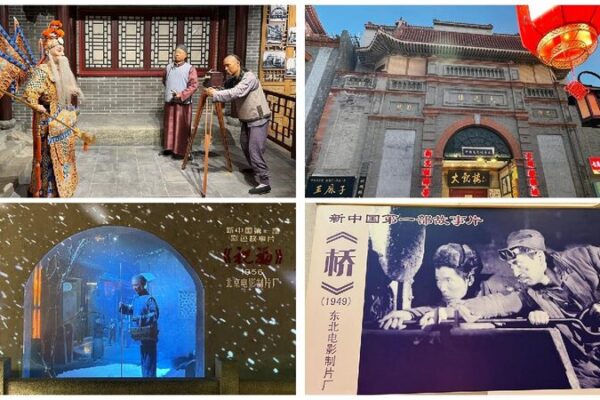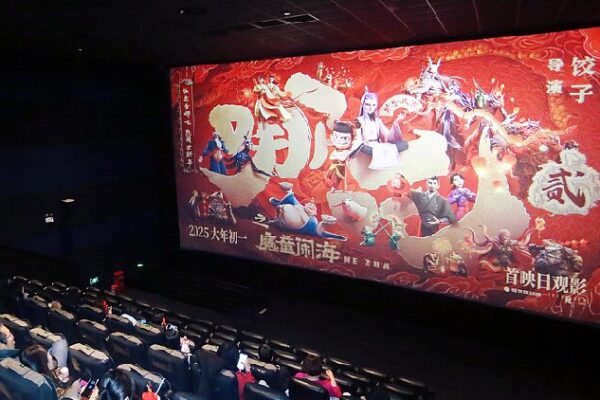Who is Ne Zha, the deity behind China’s record-breaking blockbuster?
From ancient myths to modern cinema, Ne Zha has emerged as one of China’s most iconic figures. The baby-faced warrior god has captivated audiences for centuries with tales of his heroic exploits—whacking dragons, subduing monsters, and even challenging his own father.
Now, Ne Zha has soared into the 21st-century spotlight with the animated film Ne Zha 2, smashing box-office records to become China’s highest-grossing movie ever. In just two weeks, the film has raked in over $1 billion in ticket sales, introducing a new generation to the legendary deity.
From Sanskrit Legends to Chinese Mythology
Ne Zha’s origins trace back to Indian mythology. His name is a shortened Chinese transliteration of the Sanskrit word for Nalakuvara, a figure appearing in Hindu epics like the Ramayana and Buddhist literature. As Buddhism spread across China starting in the 6th century, Nalakuvara was introduced to Chinese culture through translated sutras.
One of the earliest texts featuring Ne Zha is credited to the monk Amoghavajra (704/5-774), who depicted him as a fierce protector deity, wielding weapons to defend the faithful. Over time, Ne Zha’s image evolved, blending with Taoist and Confucian concepts to create a uniquely Chinese character.
A Child God with Enduring Appeal
By the 17th century, Ne Zha had transformed into a youthful warrior in the classic novel Investiture of the Gods (Fengshen Yanyi). The book reimagined him as a rebellious teen with extraordinary powers, apprenticed to a Taoist master and fighting alongside other mythological heroes.
This portrayal solidified Ne Zha’s place in Chinese folklore as a symbol of courage, defiance, and self-discovery. His story reflects the rich tapestry of Chinese philosophy and religion, weaving together elements of Buddhism, Taoism, and folk beliefs.
Ne Zha’s Modern Revival
The phenomenal success of Ne Zha 2 showcases the deity’s enduring relevance. The film’s modern retelling resonates with audiences by emphasizing themes of identity, family, and destiny—universal concepts that strike a chord with young viewers.
Ne Zha’s journey from ancient scriptures to cutting-edge animation highlights the dynamic nature of cultural icons. Just as past storytellers adapted his legend to reflect their times, today’s creators are reimagining Ne Zha for a new era, blending traditional values with contemporary storytelling.
A Cultural Phenomenon
Beyond entertainment, the resurgence of Ne Zha signifies a deeper interest in China’s rich mythological heritage among the younger generation. As they navigate a rapidly changing world, stories like Ne Zha’s offer inspiration and a connection to cultural roots.
With the success of Ne Zha 2 and other modern interpretations of classic tales, it’s clear that these ancient legends continue to captivate and inspire. Ne Zha’s legacy lives on, bridging the past and the present in a way that speaks to audiences not just in China but around the globe.
Reference(s):
cgtn.com

